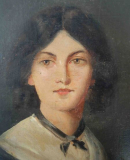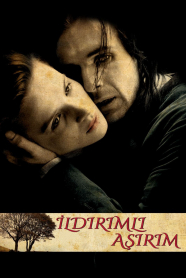
Эмили Бронте
Эмили Бронте
Писательница
Э́мили Джейн Бронте (30 июля 1818, Торнтон, Уэст-Йоркшир, Великобритания — 19 декабря 1848, Хоэрт, там же) — английская писательница и поэтесса, средняя из трёх сестёр Бронте. Автор романа «Грозовой перевал», а также ряда стихотворений. Эмили была пятым ребёнком в семье бедного священника ирландского происхождения Патрика Бронте и его жены Марии Бренуэлл. Мать умерла, когда Эмили было три года. Бо́льшую часть своей жизни Эмили провела в деревне Хоэрт (Уэст-Йоркшир). Некоторое время вместе со старшими сёстрами она училась в благотворительной школе в Кован-Бридж. Эпидемия, разразившаяся в школе и унёсшая жизни двух её сестёр, Марии и Элизабет, потрясла шестилетнюю Эмили и отразилась на всей её последующей жизни и творчестве. Особенно близкие родственные и творческие отношения связывали Эмили с младшей сестрой Энн. Подобно брату Бренуэллу и Шарлотте, сочинявшим романтические повести «ангрианского цикла», Эмили и Энн создали свой воображаемый мир, Гондал, источник их поэтического вдохновения. Несколько месяцев в 1835 году Эмили проучилась в Роухедской школе, но вскоре вернулась в Хоэрт из-за тоски по дому. В 1837 году она служит учительницей в предместье Галифакса Лоу-Хилле, а в 1842 году вместе с Шарлоттой уезжает в Брюссель для продолжения образования. После возвращения из Брюсселя, Эмили покинет Хоэрт лишь однажды — в 1845 году Энн организует для неё и себя короткую поездку в Йорк. В 1846 году выходит поэтический сборник «Стихотворения Каррера, Эллиса и Эктона Беллов». Стихи Эмили — «Эллиса» — получают довольно высокую оценку критики. В 1847 году был опубликован её роман «Грозовой перевал», который впоследствии принес ей славу. При жизни Эмили этот роман остался практически незамеченным, лишь к концу 19-го века он получил всеобщее признание в литературных кругах. В биографической справке Шарлотта отмечала «ужасающую, великую мрачность», пронизывающую повествование о двух йоркширских семействах Эрншо и Линтонов и их злом гении Хитклиффе. Кэтрин Эрншо и Хитклиффа связывает бурная, демоническая, мятежная страсть. Их любовь трагична. Только после смерти они чудесным образом соединяются. Известная английская писательница Элизабет Гаскелл, писала, что роман «Грозовой перевал» вызвал у многих читателей дрожь ужаса и «отвращения к той выразительности… с которой были изображены дурные… персонажи». Однако роману присущи моральная сила и мудрость, жестокости, коварству и безумию противостоит разум и справедливость. Как и её сестра Энн, Эмили Бронте почти не имела близких отношений с людьми вне семейного круга. Её переписка почти полностью утрачена. Более того, в своём письме Эллен Насси она с иронией заметила, что «похоже, никогда в жизни не писала нормальных писем». Страница из дневника Эмили, на которой изображена она с сестрой Энн, 1837 годВ настоящее время особенно высоко оценивается её поэзия. Стихотворения «Воспоминание» (Remembrance), «Узник» (The Prisoner) и другие принесли ей славу талантливой поэтессы, не менее оригинальной, чем Блейк, Шелли и Байрон. В сентябре 1848 года Эмили простудилась на похоронах брата и через два месяца умерла от скоротечной чахотки.
Подробная информация по ссылке:
https://ru.wikipedia.org/wiki/%D0%91%D1%80%D0%BE%D0%BD%D1%82%D0%B5,_%D0%AD%D0%BC%D0%B8%D0%BB%D0%B8
